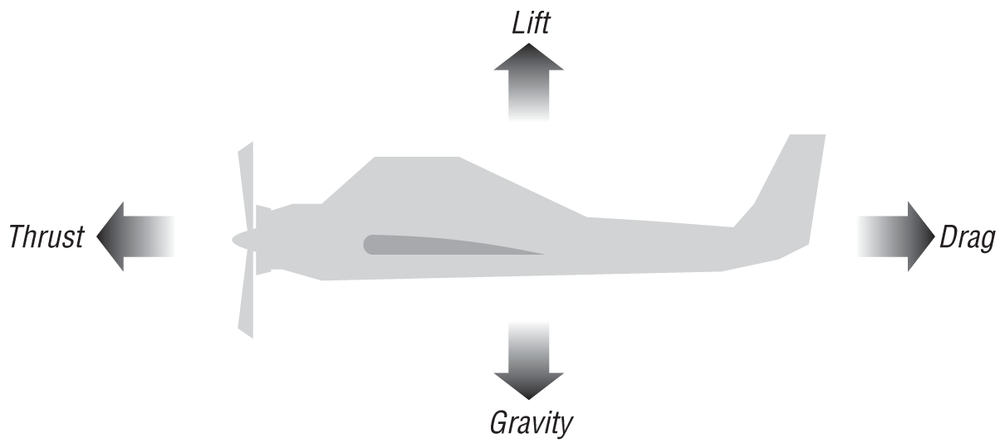Chapter 15. Aircraft
If you are going to write a flight simulation game, one of the most important aspects of your game engine will be your flight model. Yes, your 3D graphics, user interface, story, avionics system simulation, and coding are all important, but what really defines the behavior of the aircraft that you are simulating is your flight model. Basically, this is your simplified version of the physics of aircraft flight—that is, your assumptions, approximations, and all the formulas you’ll use to calculate mass, inertia, and lift and drag forces and moments.
There are four major forces that act on an airplane in flight: gravity, lift, thrust, and drag. Gravity, of course, is the force that tends to pull the aircraft to the ground, while lift is the force generated by the wings (or lifting surfaces) of the aircraft to counteract gravity and enable the plane to stay aloft. The thrust force generated by the aircraft’s propulsor (jet engine or propeller) increases the aircraft’s velocity and enables the lifting surfaces to generate lift. Finally, drag counteracts the thrust force, tending to impede the aircraft’s motion. Figure 15-1 illustrates these forces.

We’ve already discussed the force due to gravity in earlier chapters, so we won’t address it again in this chapter except to say that the total of all lift forces must be greater than ...
Get Physics for Game Developers, 2nd Edition now with the O’Reilly learning platform.
O’Reilly members experience books, live events, courses curated by job role, and more from O’Reilly and nearly 200 top publishers.

